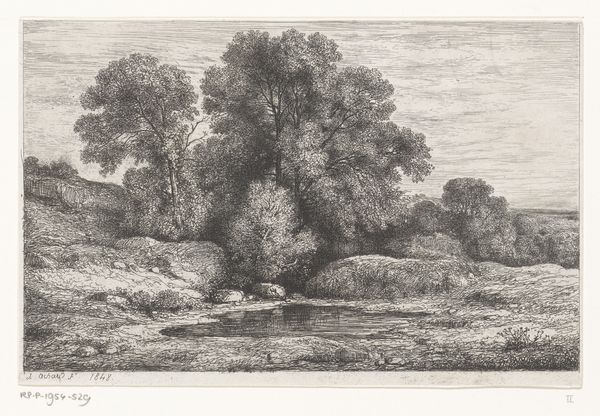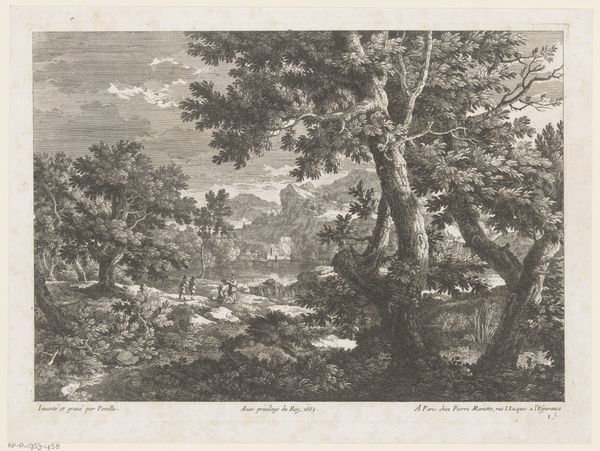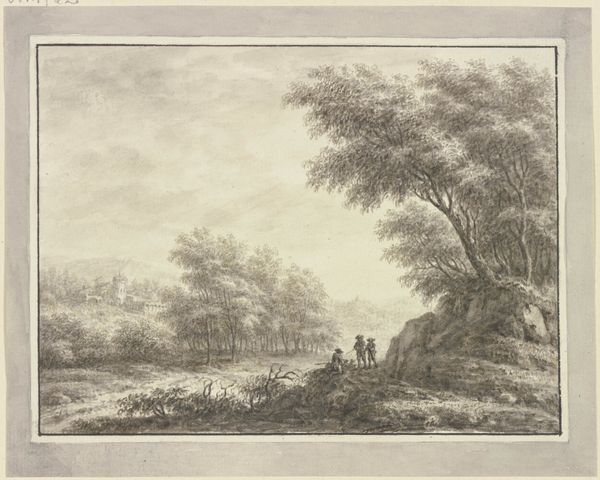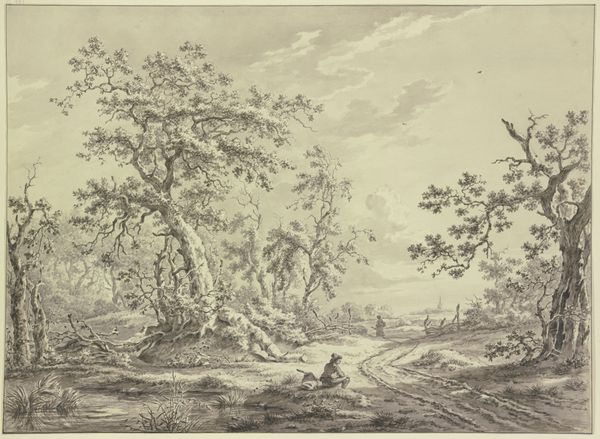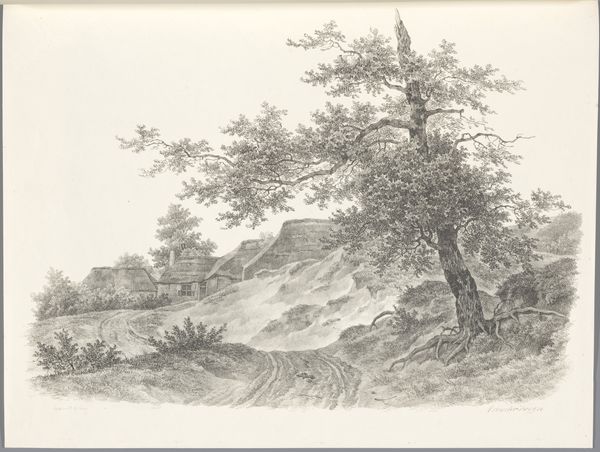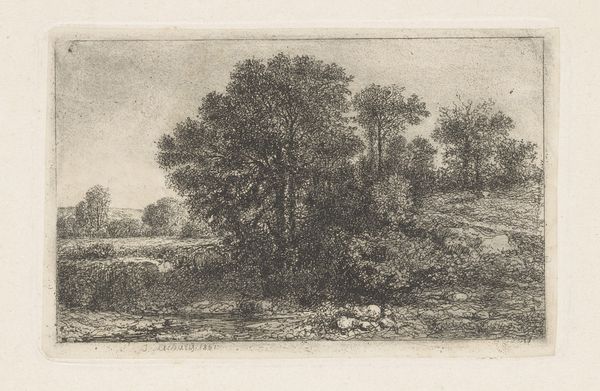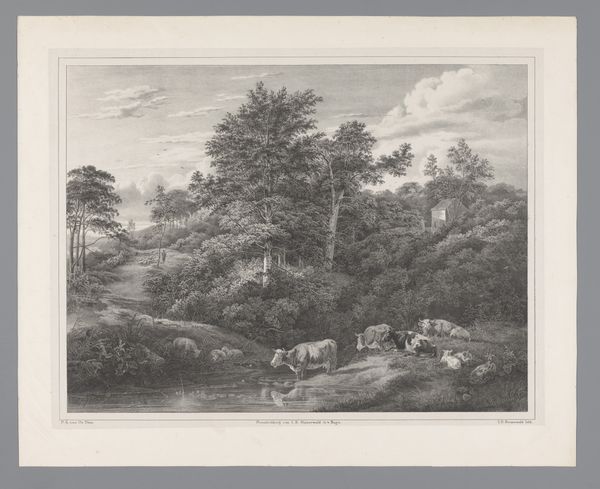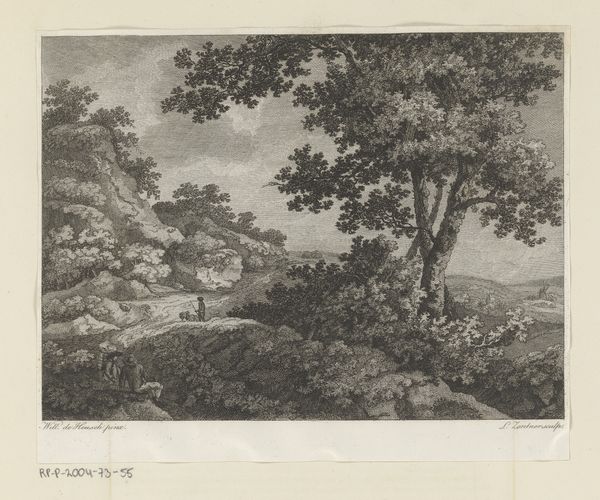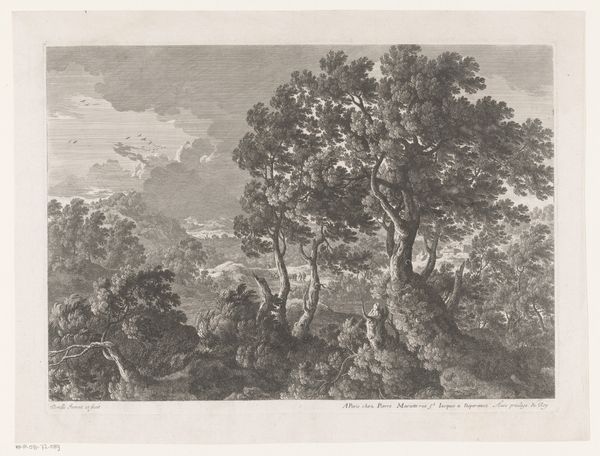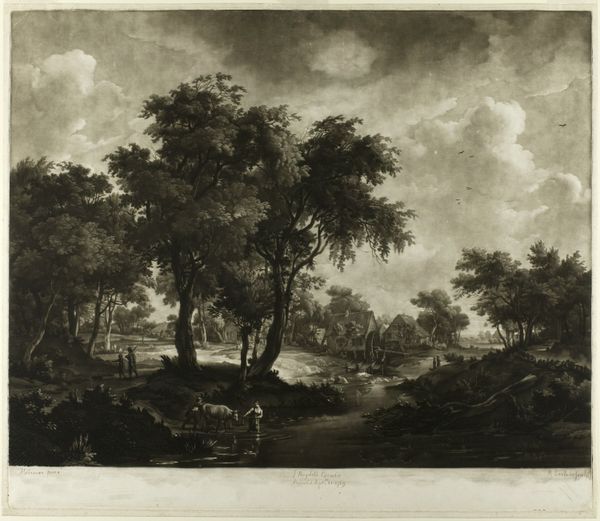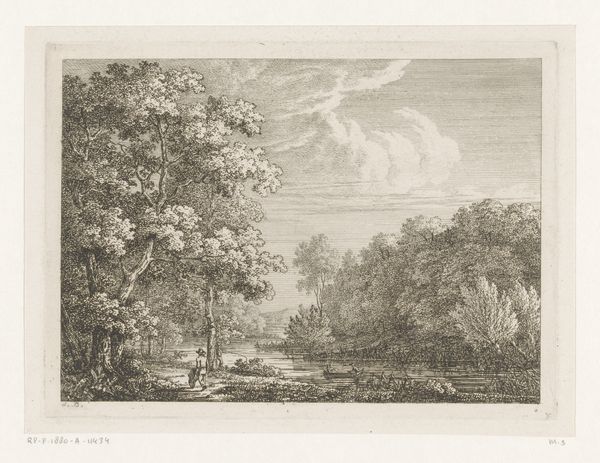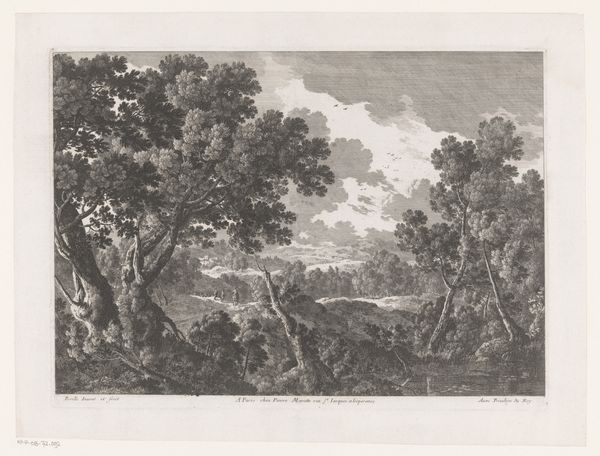
plein-air
#
organic
#
organic
#
plein-air
#
landscape
#
nature
Dimensions: height 297 mm, width 449 mm
Copyright: Rijks Museum: Open Domain
Editor: This is Hendrik-Dirk Kruseman Van Elten's "Landschap met beek en struiken", made sometime between 1839 and 1892. It’s a sepia-toned landscape with a stream and shrubbery. What immediately strikes me is the tonal range and how that dictates the atmospheric perspective, but what do you see in terms of formal qualities? Curator: The meticulous application of wash creates depth through a masterful orchestration of light and shadow. Note how the artist modulates tone to differentiate between the textured foreground and the receding background, adhering to principles of aerial perspective. The composition, while seemingly natural, subtly guides the eye; where do you see the clearest evidence of compositional intent? Editor: Perhaps the placement of the large tree on the right and the way the stream leads the eye towards the implied vanishing point? But does the lack of vibrant colors perhaps flatten the perspective? Curator: On the contrary, the restricted palette serves to accentuate tonal variations. Observe how each brushstroke functions not merely descriptively but constructively. It contributes to a semiotic layering where trees aren’t just trees, but formal elements engaged in a complex dialogue about space, light, and ultimately, representation itself. The line work around the trees almost has a structuralist feeling. Editor: So, it’s less about faithfully representing nature and more about manipulating form and tone? Curator: Precisely. Van Elten's landscape offers a sophisticated study in formal relationships. What we learn is how seemingly simple elements contribute to an enriched artful orchestration. Editor: It is fascinating how much can be discovered just by examining the artist's choices about light, line, and form. It reframes how I viewed the piece entirely.
Comments
No comments
Be the first to comment and join the conversation on the ultimate creative platform.
